Yash Goyal
MAPL: Parameter-Efficient Adaptation of Unimodal Pre-Trained Models for Vision-Language Few-Shot Prompting
Oct 13, 2022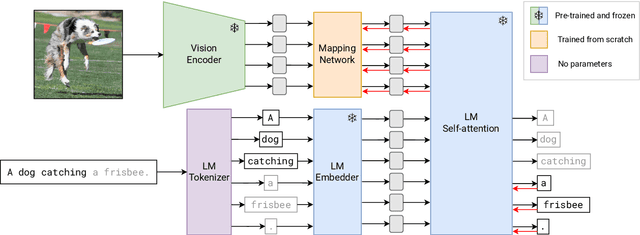

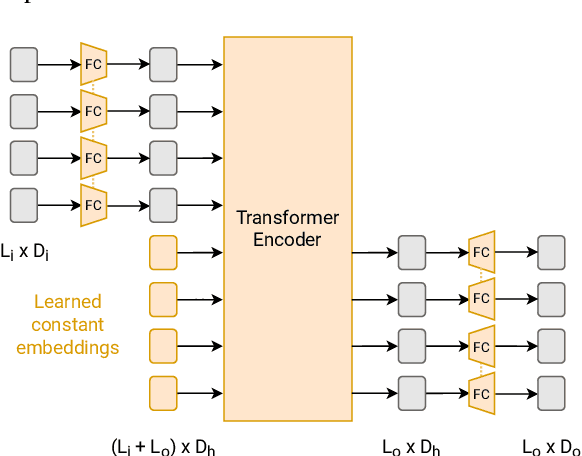
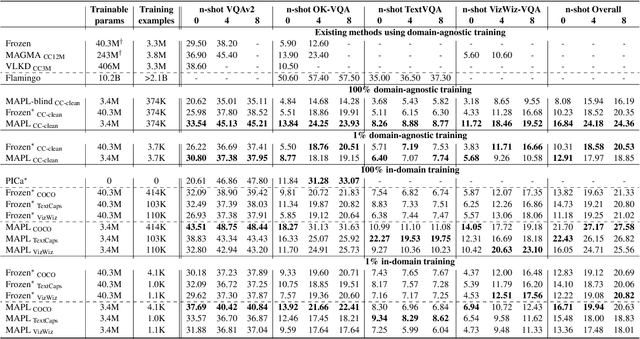
Abstract:Large pre-trained models have proved to be remarkable zero- and (prompt-based) few-shot learners in unimodal vision and language tasks. We propose MAPL, a simple and parameter-efficient method that reuses frozen pre-trained unimodal models and leverages their strong generalization capabilities in multimodal vision-language (VL) settings. MAPL learns a lightweight mapping between the representation spaces of unimodal models using aligned image-text data, and can generalize to unseen VL tasks from just a few in-context examples. The small number of trainable parameters makes MAPL effective at low-data and in-domain learning. Moreover, MAPL's modularity enables easy extension to other pre-trained models. Extensive experiments on several visual question answering and image captioning benchmarks show that MAPL achieves superior or competitive performance compared to similar methods while training orders of magnitude fewer parameters. MAPL can be trained in just a few hours using modest computational resources and public datasets. We plan to release the code and pre-trained models.
Image Retrieval from Contextual Descriptions
Mar 29, 2022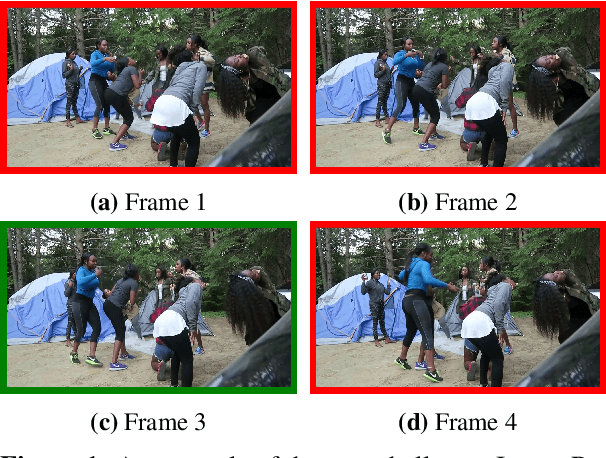
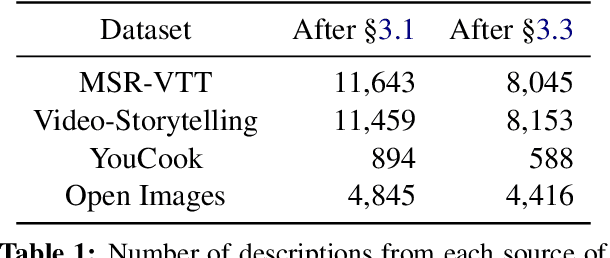
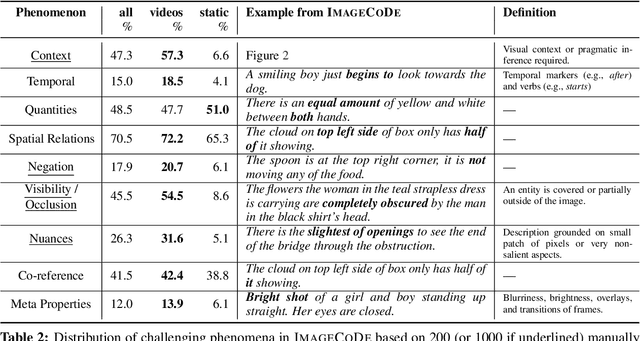
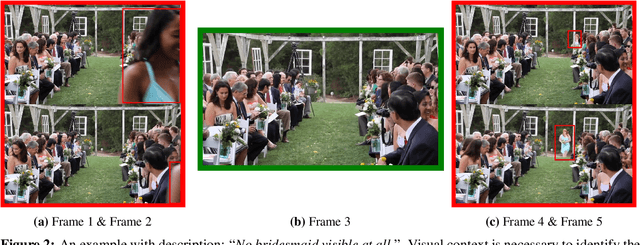
Abstract:The ability to integrate context, including perceptual and temporal cues, plays a pivotal role in grounding the meaning of a linguistic utterance. In order to measure to what extent current vision-and-language models master this ability, we devise a new multimodal challenge, Image Retrieval from Contextual Descriptions (ImageCoDe). In particular, models are tasked with retrieving the correct image from a set of 10 minimally contrastive candidates based on a contextual description. As such, each description contains only the details that help distinguish between images. Because of this, descriptions tend to be complex in terms of syntax and discourse and require drawing pragmatic inferences. Images are sourced from both static pictures and video frames. We benchmark several state-of-the-art models, including both cross-encoders such as ViLBERT and bi-encoders such as CLIP, on ImageCoDe. Our results reveal that these models dramatically lag behind human performance: the best variant achieves an accuracy of 20.9 on video frames and 59.4 on static pictures, compared with 90.8 in humans. Furthermore, we experiment with new model variants that are better equipped to incorporate visual and temporal context into their representations, which achieve modest gains. Our hope is that ImageCoDE will foster progress in grounded language understanding by encouraging models to focus on fine-grained visual differences.
Question-Conditioned Counterfactual Image Generation for VQA
Nov 14, 2019

Abstract:While Visual Question Answering (VQA) models continue to push the state-of-the-art forward, they largely remain black-boxes - failing to provide insight into how or why an answer is generated. In this ongoing work, we propose addressing this shortcoming by learning to generate counterfactual images for a VQA model - i.e. given a question-image pair, we wish to generate a new image such that i) the VQA model outputs a different answer, ii) the new image is minimally different from the original, and iii) the new image is realistic. Our hope is that providing such counterfactual examples allows users to investigate and understand the VQA model's internal mechanisms.
Explaining Classifiers with Causal Concept Effect (CaCE)
Jul 16, 2019



Abstract:How can we understand classification decisions made by deep neural nets? We propose answering this question by using ideas from causal inference. We define the ``Causal Concept Effect'' (CaCE) as the causal effect that the presence or absence of a concept has on the prediction of a given deep neural net. We then use this measure as a mean to understand what drives the network's prediction and what does not. Yet many existing interpretability methods rely solely on correlations, resulting in potentially misleading explanations. We show how CaCE can avoid such mistakes. In high-risk domains such as medicine, knowing the root cause of the prediction is crucial. If we knew that the network's prediction was caused by arbitrary concepts such as the lighting conditions in an X-ray room instead of medically meaningful concept, this would prevent us from disastrous deployment of such models. Estimating CaCE is difficult in situations where we cannot easily simulate the do-operator. As a simple solution, we propose learning a generative model, specifically a Variational AutoEncoder (VAE) on image pixels or image embeddings extracted from the classifier to measure VAE-CaCE. We show that VAE-CaCE is able to correctly estimate the true causal effect as compared to other baselines in controlled settings with synthetic and semi-natural high dimensional images.
Counterfactual Visual Explanations
Apr 16, 2019



Abstract:A counterfactual query is typically of the form 'For situation X, why was the outcome Y and not Z?'. A counterfactual explanation (or response to such a query) is of the form "If X was X*, then the outcome would have been Z rather than Y." In this work, we develop a technique to produce counterfactual visual explanations. Given a 'query' image $I$ for which a vision system predicts class $c$, a counterfactual visual explanation identifies how $I$ could change such that the system would output a different specified class $c'$. To do this, we select a 'distractor' image $I'$ that the system predicts as class $c'$ and identify spatial regions in $I$ and $I'$ such that replacing the identified region in $I$ with the identified region in $I'$ would push the system towards classifying $I$ as $c'$. We apply our approach to multiple image classification datasets generating qualitative results showcasing the interpretability and discriminativeness of our counterfactual explanations. To explore the effectiveness of our explanations in teaching humans, we present machine teaching experiments for the task of fine-grained bird classification. We find that users trained to distinguish bird species fare better when given access to counterfactual explanations in addition to training examples.
Making the V in VQA Matter: Elevating the Role of Image Understanding in Visual Question Answering
May 15, 2017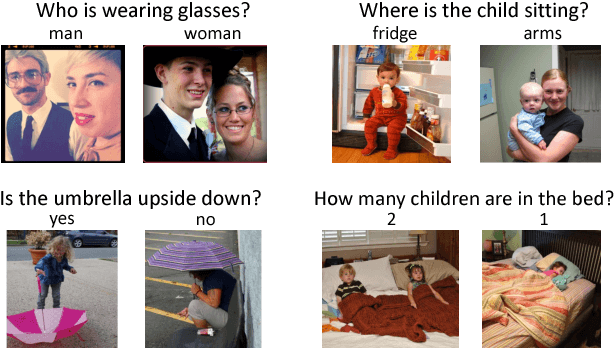
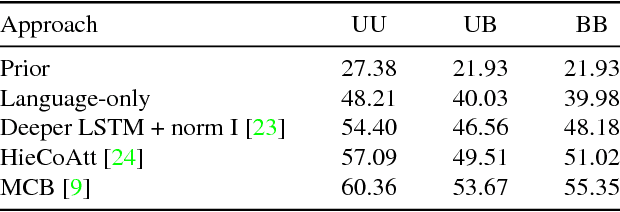

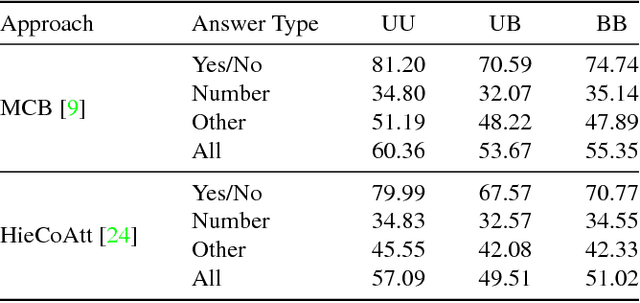
Abstract:Problems at the intersection of vision and language are of significant importance both as challenging research questions and for the rich set of applications they enable. However, inherent structure in our world and bias in our language tend to be a simpler signal for learning than visual modalities, resulting in models that ignore visual information, leading to an inflated sense of their capability. We propose to counter these language priors for the task of Visual Question Answering (VQA) and make vision (the V in VQA) matter! Specifically, we balance the popular VQA dataset by collecting complementary images such that every question in our balanced dataset is associated with not just a single image, but rather a pair of similar images that result in two different answers to the question. Our dataset is by construction more balanced than the original VQA dataset and has approximately twice the number of image-question pairs. Our complete balanced dataset is publicly available at www.visualqa.org as part of the 2nd iteration of the Visual Question Answering Dataset and Challenge (VQA v2.0). We further benchmark a number of state-of-art VQA models on our balanced dataset. All models perform significantly worse on our balanced dataset, suggesting that these models have indeed learned to exploit language priors. This finding provides the first concrete empirical evidence for what seems to be a qualitative sense among practitioners. Finally, our data collection protocol for identifying complementary images enables us to develop a novel interpretable model, which in addition to providing an answer to the given (image, question) pair, also provides a counter-example based explanation. Specifically, it identifies an image that is similar to the original image, but it believes has a different answer to the same question. This can help in building trust for machines among their users.
CloudCV: Large Scale Distributed Computer Vision as a Cloud Service
Feb 13, 2017



Abstract:We are witnessing a proliferation of massive visual data. Unfortunately scaling existing computer vision algorithms to large datasets leaves researchers repeatedly solving the same algorithmic, logistical, and infrastructural problems. Our goal is to democratize computer vision; one should not have to be a computer vision, big data and distributed computing expert to have access to state-of-the-art distributed computer vision algorithms. We present CloudCV, a comprehensive system to provide access to state-of-the-art distributed computer vision algorithms as a cloud service through a Web Interface and APIs.
Resolving Language and Vision Ambiguities Together: Joint Segmentation & Prepositional Attachment Resolution in Captioned Scenes
Sep 26, 2016



Abstract:We present an approach to simultaneously perform semantic segmentation and prepositional phrase attachment resolution for captioned images. Some ambiguities in language cannot be resolved without simultaneously reasoning about an associated image. If we consider the sentence "I shot an elephant in my pajamas", looking at language alone (and not using common sense), it is unclear if it is the person or the elephant wearing the pajamas or both. Our approach produces a diverse set of plausible hypotheses for both semantic segmentation and prepositional phrase attachment resolution that are then jointly reranked to select the most consistent pair. We show that our semantic segmentation and prepositional phrase attachment resolution modules have complementary strengths, and that joint reasoning produces more accurate results than any module operating in isolation. Multiple hypotheses are also shown to be crucial to improved multiple-module reasoning. Our vision and language approach significantly outperforms the Stanford Parser (De Marneffe et al., 2006) by 17.91% (28.69% relative) and 12.83% (25.28% relative) in two different experiments. We also make small improvements over DeepLab-CRF (Chen et al., 2015).
Towards Transparent AI Systems: Interpreting Visual Question Answering Models
Sep 09, 2016



Abstract:Deep neural networks have shown striking progress and obtained state-of-the-art results in many AI research fields in the recent years. However, it is often unsatisfying to not know why they predict what they do. In this paper, we address the problem of interpreting Visual Question Answering (VQA) models. Specifically, we are interested in finding what part of the input (pixels in images or words in questions) the VQA model focuses on while answering the question. To tackle this problem, we use two visualization techniques -- guided backpropagation and occlusion -- to find important words in the question and important regions in the image. We then present qualitative and quantitative analyses of these importance maps. We found that even without explicit attention mechanisms, VQA models may sometimes be implicitly attending to relevant regions in the image, and often to appropriate words in the question.
Yin and Yang: Balancing and Answering Binary Visual Questions
Apr 19, 2016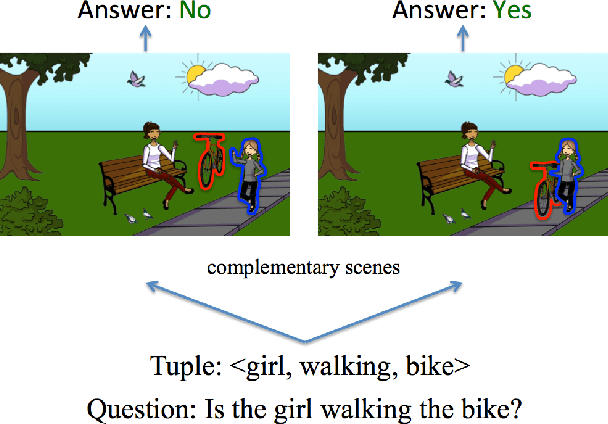
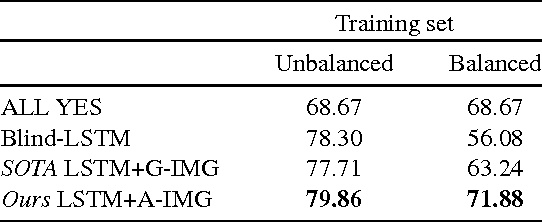
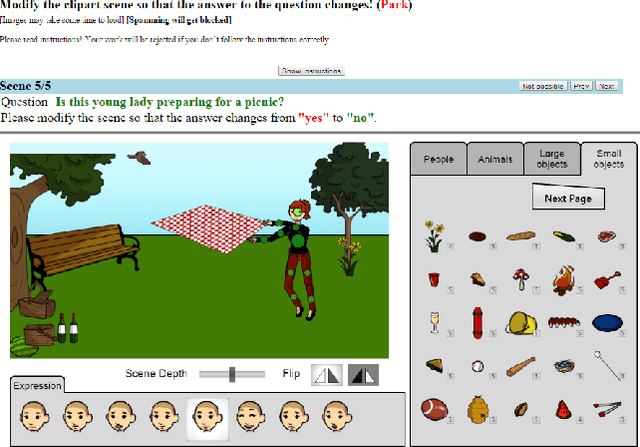
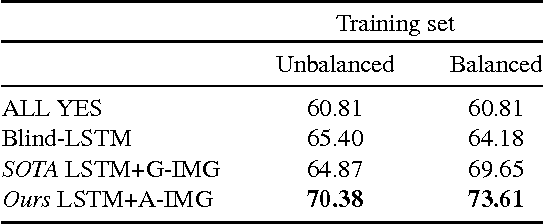
Abstract:The complex compositional structure of language makes problems at the intersection of vision and language challenging. But language also provides a strong prior that can result in good superficial performance, without the underlying models truly understanding the visual content. This can hinder progress in pushing state of art in the computer vision aspects of multi-modal AI. In this paper, we address binary Visual Question Answering (VQA) on abstract scenes. We formulate this problem as visual verification of concepts inquired in the questions. Specifically, we convert the question to a tuple that concisely summarizes the visual concept to be detected in the image. If the concept can be found in the image, the answer to the question is "yes", and otherwise "no". Abstract scenes play two roles (1) They allow us to focus on the high-level semantics of the VQA task as opposed to the low-level recognition problems, and perhaps more importantly, (2) They provide us the modality to balance the dataset such that language priors are controlled, and the role of vision is essential. In particular, we collect fine-grained pairs of scenes for every question, such that the answer to the question is "yes" for one scene, and "no" for the other for the exact same question. Indeed, language priors alone do not perform better than chance on our balanced dataset. Moreover, our proposed approach matches the performance of a state-of-the-art VQA approach on the unbalanced dataset, and outperforms it on the balanced dataset.
 Add to Chrome
Add to Chrome Add to Firefox
Add to Firefox Add to Edge
Add to Edge